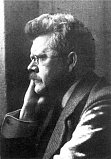Schmidt, R.: Difference between revisions
No edit summary |
No edit summary |
||
| (3 intermediate revisions by the same user not shown) | |||
| Line 1: | Line 1: | ||
{{Person | {{Person | ||
|MainNamePhon=Richard Schmidt | |MainNamePhon=Richard Schmidt | ||
|SortName=Schmidt, Richard | |SortName=Schmidt, Richard | ||
|namefirst=Richard | |namefirst=Richard | ||
|namelast=Schmidt | |namelast=Schmidt | ||
|PersonType=Authors of German Works; Professors | |||
|bio=Richard Schmidt, 1866-1939, was an Indologist. Schmidt became known as the author of the work “Fakirs and Fakirtum in Old and New India”, published in Berlin in 1908. In this work he describes various ''asanas'' and ''pranayamas'', which many people in Germany, including Gustav Meyrink, instructed to practice yoga. For a long time he coined the idea that yogi and fakir are the same ... (The term fakir comes from Islam and refers to a follower of Islamic Sufism, i.e. a dervish).<br> | |bio=Richard Schmidt, 1866-1939, was an Indologist. Schmidt became known as the author of the work “Fakirs and Fakirtum in Old and New India”, published in Berlin in 1908. In this work he describes various ''asanas'' and ''pranayamas'', which many people in Germany, including Gustav Meyrink, instructed to practice yoga. For a long time he coined the idea that yogi and fakir are the same ... (The term fakir comes from Islam and refers to a follower of Islamic Sufism, i.e. a dervish).<br> | ||
Schmidt studied at the University of Halle. His Indian teachers were Richard Pischel and Karl Friedrich Geldner. Schmidt received his doctorate in 1890. After he had already submitted some translations of literary texts from Sanskrit, he completed his habilitation in 1898 in Halle bei Pischel.<br> | |||
Richard Schmidt worked as a private lecturer at the University of Halle from 1898-1910 alongside Pischel, Theodor Zachariae, and Theodor Hultzsch. The course catalogs from Halle identify Richard Schmidt as a multi-faceted university professor. From 1904 to 1910 Richard Schmidt was the librarian of the German Oriental Society (DMG), having previously been their bookkeeper.<br> | |||
Schmidt's scientific activity was mainly focused on the creation of reliable text editions and translations of works of ancient Indian narrative literature and on the development of Sanskrit texts on erotology (Kamashastra ). In doing so, he made important source material accessible to researchers in other disciplines. He made great contributions to the DMG library, including the incorporation of the Socins library.<br> | |||
In 1910 Richard Schmidt accepted an appointment at the University of Münster as professor of Indology. An important fruit of his time in Münster are the supplements to Böhtlingk's Sanskrit dictionary in a shorter version (pw), which give the sum of his numerous previously published contributions to Sanskrit lexicography. ([https://wiki.yoga-vidya.de/Richard_Schmidt Adapted from Source Feb 17, 2021]) | |||
|images=File:Schmidt Richard Yoga Vidya.jpg | |||
|yearbirth=1866/01/29 | |||
|yeardeath=1939/11/15 | |||
|bornin=Aschersleben, Germany | |||
|HasDrlPage=Yes | |||
|HasLibPage=Yes | |||
|phduniversity=University of Halle | |||
|IsInGyatsa=No | |||
}} | |||
|PersonType=Authors of German Works; Professors | |PersonType=Authors of German Works; Professors | ||
|images=File:Schmidt Richard Yoga Vidya.jpg | |images=File:Schmidt Richard Yoga Vidya.jpg | ||
Latest revision as of 16:53, 29 September 2022
| PersonType | Category:Authors of German Works Category:Professors |
|---|---|
| FirstName / namefirst | Richard |
| LastName / namelast | Schmidt |
| MainNamePhon | Richard Schmidt |
| SortName | Schmidt, Richard |
| bio | Richard Schmidt, 1866-1939, was an Indologist. Schmidt became known as the author of the work “Fakirs and Fakirtum in Old and New India”, published in Berlin in 1908. In this work he describes various asanas and pranayamas, which many people in Germany, including Gustav Meyrink, instructed to practice yoga. For a long time he coined the idea that yogi and fakir are the same ... (The term fakir comes from Islam and refers to a follower of Islamic Sufism, i.e. a dervish). Schmidt studied at the University of Halle. His Indian teachers were Richard Pischel and Karl Friedrich Geldner. Schmidt received his doctorate in 1890. After he had already submitted some translations of literary texts from Sanskrit, he completed his habilitation in 1898 in Halle bei Pischel. Richard Schmidt worked as a private lecturer at the University of Halle from 1898-1910 alongside Pischel, Theodor Zachariae, and Theodor Hultzsch. The course catalogs from Halle identify Richard Schmidt as a multi-faceted university professor. From 1904 to 1910 Richard Schmidt was the librarian of the German Oriental Society (DMG), having previously been their bookkeeper. Schmidt's scientific activity was mainly focused on the creation of reliable text editions and translations of works of ancient Indian narrative literature and on the development of Sanskrit texts on erotology (Kamashastra ). In doing so, he made important source material accessible to researchers in other disciplines. He made great contributions to the DMG library, including the incorporation of the Socins library. In 1910 Richard Schmidt accepted an appointment at the University of Münster as professor of Indology. An important fruit of his time in Münster are the supplements to Böhtlingk's Sanskrit dictionary in a shorter version (pw), which give the sum of his numerous previously published contributions to Sanskrit lexicography. (Adapted from Source Feb 17, 2021) |
| YearBirth | 1866/01/29 |
| YearDeath | 1939/11/15 |
| BornIn | Aschersleben, Germany |
| phduniversity | University of Halle |
| IsInGyatsa | No |
| Other wikis |
If the page does not yet exist on the remote wiki, you can paste the tag |
|PersonType=Authors of German Works; Professors |images=File:Schmidt Richard Yoga Vidya.jpg |yearbirth=1866/01/29 |yeardeath=1939/11/15 |bornin=Aschersleben |phduniversity=University of Halle |IsInGyatsa=No |pagename=Schmidt, R. }}
